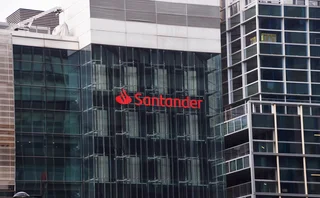
Q&A: BoJ's Nakaso on QE, JGB liquidity and Basel III
At ¥80 trillion ($668 billion), the annual bond-buying target for the Bank of Japan is roughly twice the country’s planned debt issuance for 2015 – raising questions about how long the programme can continue. Deputy governor Hiroshi Nakaso offers the answers to Risk.net

Market participants have two big worries about the Bank of Japan's (BoJ) bond-buying programme, launched in April 2013: what happens when it stops, and what happens if it doesn't stop?
The first is based on fears that stocks and the economy will slump without the central bank's indirect support; the second reflects concerns that quantitative easing (QE) – expanded in October 2014 to target annual purchases of Japanese government bonds (JGBs) that are twice the size of planned issuance – will
Only users who have a paid subscription or are part of a corporate subscription are able to print or copy content.
To access these options, along with all other subscription benefits, please contact info@risk.net or view our subscription options here: http://subscriptions.risk.net/subscribe
You are currently unable to print this content. Please contact info@risk.net to find out more.
You are currently unable to copy this content. Please contact info@risk.net to find out more.
Copyright Infopro Digital Limited. All rights reserved.
As outlined in our terms and conditions, https://www.infopro-digital.com/terms-and-conditions/subscriptions/ (point 2.4), printing is limited to a single copy.
If you would like to purchase additional rights please email info@risk.net
Copyright Infopro Digital Limited. All rights reserved.
You may share this content using our article tools. As outlined in our terms and conditions, https://www.infopro-digital.com/terms-and-conditions/subscriptions/ (clause 2.4), an Authorised User may only make one copy of the materials for their own personal use. You must also comply with the restrictions in clause 2.5.
If you would like to purchase additional rights please email info@risk.net
More on Risk management
Op risk data: Santander in car crash of motor-finance fail
Also: Macquarie fined for fake metals trade flaws, Metro makes AML misses, and Invesco red-faced over greenwashing. Data by ORX News
Public enemy number one: the threat to information security
Nearly half of domestic and regional banks report risk appetite breaches amid heightened sense of insecurity
Credit risk transfer, with a derivatives twist
Dealers angle to revive market that enables them to offload counterparty exposures, freeing up capital
Op Risk Benchmarking 2024: the banks
As threats grow and regulators bore down, focus shifts to the first line
Fed stress-testing operational readiness of discount window
Experts say consultation on improved ops should be accompanied by focus on willingness to borrow
Millennium risk manager defends leverage in basis trade
“Gross notional measures don’t equate to market risk,” says Scott Rofey
Banks feel regulatory heat on op resilience
Op Risk Benchmarking: supervisors dial up reporting expectations and on-site inspections
BofA’s rates revamp leans into multi-strategy boom
New rates head Laura Chepucavage prioritises collateral efficiency, e-trading and central risk book for enlarged rates, futures and financing unit







